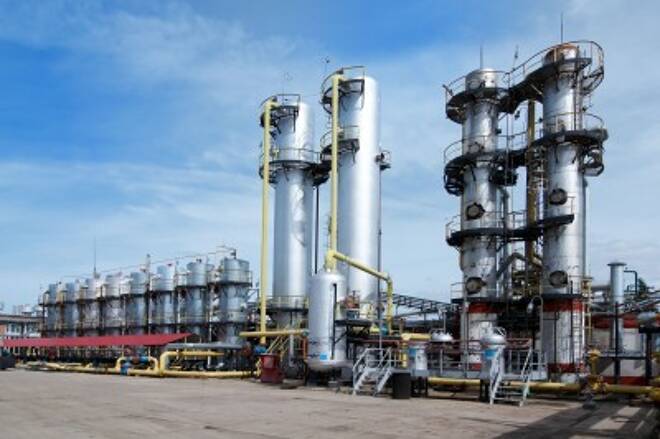Advertisement
Advertisement
Natural Gas Fundamental Forecast – September 27, 2016
By:
Natural gas futures posted a strong comeback on Monday as shorts covered aggressively after the market failed to follow-through to the downside following
Natural gas futures posted a strong comeback on Monday as shorts covered aggressively after the market failed to follow-through to the downside following Friday’s steep sell-off. November Natural Gas futures finished the session at $3.055, up $0.042 or +1.39%.
Short sellers were encouraged to cover newly established short positions on Monday on fears that the coming winter will equal or exceed the polar vortex from 2014 that drove prices sharply higher.
Natural gas prices are hovering near a 16-month high and are currently up 29 percent so far this year, putting the market on track for its largest annual percentage gain in 11 years. The catalysts behind the strength are lower production and increased exports.
Helping to support the market is a drop in gas production that is slightly lower than a year ago. At the same time, demand is up with increased exports to Mexico, as well as liquefied natural gas exports from the Gulf of Mexico.
According to Thomson Reuters data, dry gas production in the lower 48 U.S. states fell to an average of 72.6 billion cubic feet per day since the start of 2016 versus a record high 73.3 bcfd during the same period in 2015.
FORECAST
As mentioned in the weekly comments, last week’s break was all about price action and hedge fund activity. It did not reflect anything to do with the supply/demand situation. My work shows that the foundation has been laid for a classic winter rally: supply has been dropping and demand is expected to increase.
Prices are likely to rise this winter unless we start seeing more material supply growth by the December time frame. At this time, we are likely to begin the heating season with relatively tight supply. All we need is tight supply and cold weather to light a bullish flame.
Traders have to start paying attention to numbers such as heating degree days (HDDs) because they can help us understand how the natural gas market will trade. Traders can determine how much of the rise in prices is a result of the weather by using a unit of measure called the degree day. A degree day compares outdoor temperature to a standard temperature of 65 degrees Fahrenheit. The more extreme the temperature, the higher the number of degree days. A higher number of degree days will require more energy for space heating.
On Monday, we may have received the first piece of data that suggests the cold weather is coming. Meteorologists at Commodity Weather Group forecast gas-weighted heating degree days would total 2,702 in December – February. That would be the most since the 2013-2014 winter when HDDs totaled 2,834 and gas prices averaged $4.65.
Meteorologists at The Weather Company, however, do not expect as much cold. It forecast HDDs will total about 2,499, just below the 2,600 HDD average, but with the highest concentration of cold early in the season on the U.S. East Coast.
Using this data combined with my chart work, gas prices could trade in the $3.50 to $4.50 per MMBtu range from late December to early February, especially during times of extreme cold.
With this bullish scenario in hand, and time on our side, it is probably best to continue to buy on the breaks into support rather than buy strength. A trader faces to much exposure buying strength at this time and may have to go through some painful corrections while the professional traders shake the tree and try to knock the weaker traders out of their long positions.
Be patient and play for buys in value zones rather than at multi-month highs.
About the Author
James Hyerczykauthor
James is a Florida-based technical analyst, market researcher, educator and trader with 35+ years of experience. He is an expert in the area of patterns, price and time analysis as it applies to futures, Forex, and stocks.
Did you find this article useful?
Latest news and analysis
Advertisement
